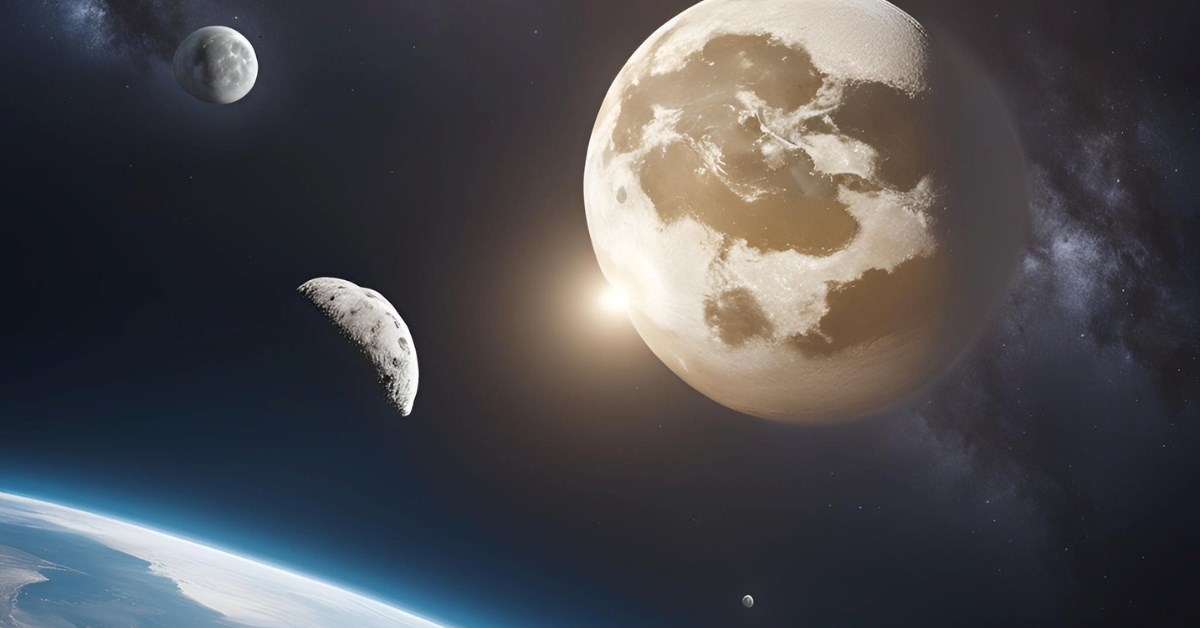2024 holds many surprises and cosmic wonders. According to NASA scientists, Earth will gain a second moon for a brief time due to an asteroid being caught in our planet's gravitational pull. This event is expected to be a rare and fascinating phenomenon that will captivate stargazers around the world.
However, this mini-moon is going to be less bright and small until and unless you have a professional telescope. This space visitor will be around for a few months starting September 29 before escaping Earth's gravity once more.
This asteroid, 2024 PT5, is from the Arjuna asteroid belt, which contains rocks with orbits that are very similar to Earth's. This small asteroid, approximately 10 meters (33 feet) in diameter, will be captured by Earth's gravity from September 29 until November 25, 2024.
What is 2024 PT5, Earth’s New “Mini” Moon?

PT5 is not a moon but rather a 10-meter asteroid from the Arjuna asteroid belt, which contains rocks that follow an orbit quite similar to Earth’s. The Arjuna asteroid belt is a group of asteroids in the Solar System, specifically classified as near-Earth objects (NEOs).
This belt consists of asteroids that have orbits similar to Earth's, typically located about 93 million miles (150 million kilometres) from the Sun. These asteroids have low orbital inclinations and periods close to one year, making their paths around the Sun very Earth-like.
Sometimes the gravity of Earth can pull objects from the Arjuna belt into its orbit, turning them into "mini-moons" or transient moons. For instance, starting on September 29, 2024, Earth will be capturing the asteroid 2024 PT5 for about two months.
The study's experts claim that Earth's gravitational field can have a significant impact and briefly capture an asteroid of this size if it is travelling at a modest speed of about 2,200 mph (3,540 km/h). That's precisely what's going to occur; this tiny asteroid will begin its roughly two-month orbit of Earth this weekend.
Key Details about 2024 PT5
- Discovery: The asteroid was discovered on August 7, 2024, by the Asteroid Terrestrial-impact Last Alert System (ATLAS) at Haleakala Observatory in Hawaii.
- Orbit Characteristics: Unlike the permanent Moon, 2024 PT5 will follow a horseshoe-shaped path around Earth rather than completing a full orbit. This is due to its relatively slow approach speed and trajectory.
- Visibility: The mini-moon is too faint to be seen with the naked eye or small telescopes but can be observed with larger telescopes during its brief stay.
What are Mini Moons?
Mini-moons are essentially asteroids that are temporarily captured by Earth's gravitational influence. They can vary in size and typically remain in orbit for a few months to a couple of years before escaping back into space. The capture of such objects is relatively rare, occurring approximately every 10 to 20 years on average.
Types of Mini-Moons
- Temporarily Captured Orbiters: These mini-moons complete at least one full orbit around Earth before escaping. For example, 2006 RH120, a mini-moon orbited Earth for about a year from July 2006 to 2007.
- Temporarily Captured Flybys: These do not complete a full orbit and follow a horseshoe-shaped path around Earth. For example, 2024 PT5 is currently set to be captured from September 29 to November 25, 2024; it will not complete a full orbit. 2020 CD3, a mini-moon, remained in Earth's orbit for several years before departing in May 2020. 2022 NX1 had a similar trajectory and is expected to return in future years.
Characteristics
- Mini-moons typically range in size from a few metres to several tens of metres across.
- They are often difficult to detect due to their small size and low brightness, making observations challenging.
- The capture of mini-moons occurs approximately every 10 to 20 years, highlighting their rarity.
Will 2024 PT5 be visible from India?
Sadly, 2024 PT5 will not be visible from India or any other country since it measures around 10 metres (33 feet) in diameter. It is too small and dim for observation with the naked eye, binoculars, or standard telescopes. Only professional astronomers with large telescopes will be able to study it effectively.
How Often do Mini-Moons like 2024 PT5 Occur?
Mini-moons like 2024 PT5 occur relatively frequently, with short-term captures happening multiple times per decade. However, longer-term captures, where an asteroid remains in orbit for a year or more, are much rarer, typically occurring every 10 to 20 years.
Comments
All Comments (0)
Join the conversation